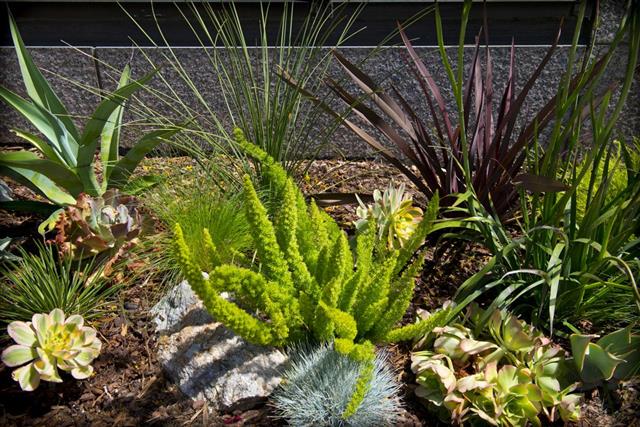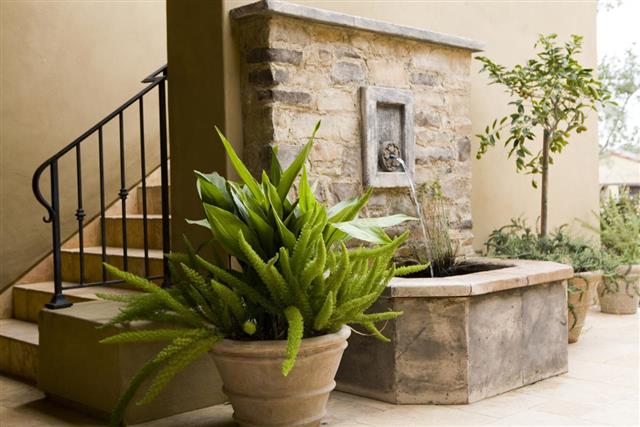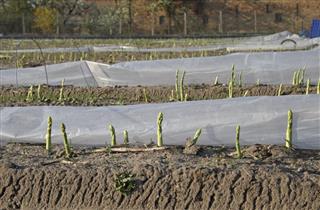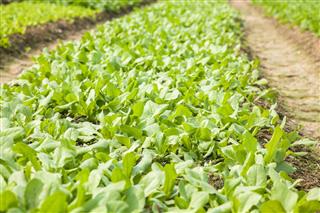
Asparagus fern is a shrub of the lily family, which can be grown both as a houseplant and ornamental plant. It is a low maintenance plant, that be grown quite easily. Know more about asparagus plant, its care and maintenance with this article.
Asparagus fern is a weed that belongs to the lily family or Liliaceae. Asparagus aethiopicus, Asparagus densiflorus, Asparagus plumosus, Asparagus setaceus, and Asparagus virgatus are the species that come under this common name. Though it is characterized by lacy fern-like foliage, it is not a true fern. Rather, it is a close relative of the asparagus plant, with its bushy appearance and delicate foliage. It is native to South Africa and is often considered as a weed. But today, this fern is a popular houseplant. The credit for popularizing it as an ornamental plant in Europe goes to Carl Ludwig Sprenger, a German botanist.
It is a perennial, branching shrub with delicate fern-like foliage. The stems are quite tough with a few numbers of spines on it. The leaves are actually cladodes, and not true leaves. These cladodes are actually modified and flattened stems, though they look like leaves. They can grow up to a length of about 0.8 to 2 cm, and width of 0.1 to 0.2 cm, and can be found in groups of four or more.
This plant is characterized by a dense mat of fibrous roots and tubers. In spring or late summer, some small white, or pinkish, bell-shaped flowers can be found on the stems. The flowers appear in clusters, and each flower is approximately 0.3 to 0.5 cm in length. The plant also produces green colored berries in the winter or early spring. Later, the berries turn red, as they mature. Each berry is about 8 mm wide, and contain one or more black seeds, which can be used for propagating the plant.
You can grow it as a houseplant or ornamental plant. The plant can be propagated either from the seeds or by division. For growing an asparagus plant, you can buy some good quality seeds or a potted plant from a nursery. It needs well-drained soil, rich in nutrients. It generally prefers moist, sandy or loan types of soil. So, mix the soil with peat moss and sand, before planting it. Water requirement of this plant is moderate. The plant prefers bright light, though it can tolerate low light conditions as well.
You can place the plant in a partially shaded area. Once the plant grows, and its roots start to overcrowd the pot, transfer it to a larger pot or container. The best time for applying fertilizer is the spring or early fall period. For propagating asparagus plant by division, just take out the root ball of the plant, and then divide it into two sections. Then, plant both the sections separately to grow two ferns.
The key is to maintain proper growth conditions. As the plant prefers bright sunlight, its growth may get affected, if planted in a place that does not receive adequate sunlight. Additionally, the foliage of the plant can turn yellow as well. For growing asparagus as a houseplant, you can place it near a window. This would provide bright, but filtered sunlight.
As the water requirement of this plant is moderate, it is better to keep the soil a little moist, or let the soil dry a little before watering the plant. The color of the foliage can serve as an indicator of under watering. When the plant is not receiving adequate water, its foliage would turn yellow and needle would also droop.
It is considered as a toxic plant, when ingested. Ingestion of the berries can cause gastrointestinal problems like, diarrhea, vomiting and stomach pain, while skin contact can cause allergic reactions or dermatitis. The plant is toxic to pets like dogs and cats. Therefore, it is advisable to keep cats or dogs away from this plant, or take adequate care so that your pets do not consume any part of the plant.
If grown with adequate care, asparagus fern with its lacy and delicate foliage can be a beautiful addition to any house. Besides, it is a low maintenance plant that can be grown quite easily. However, you have to be a bit careful, if you have pets in your house.



